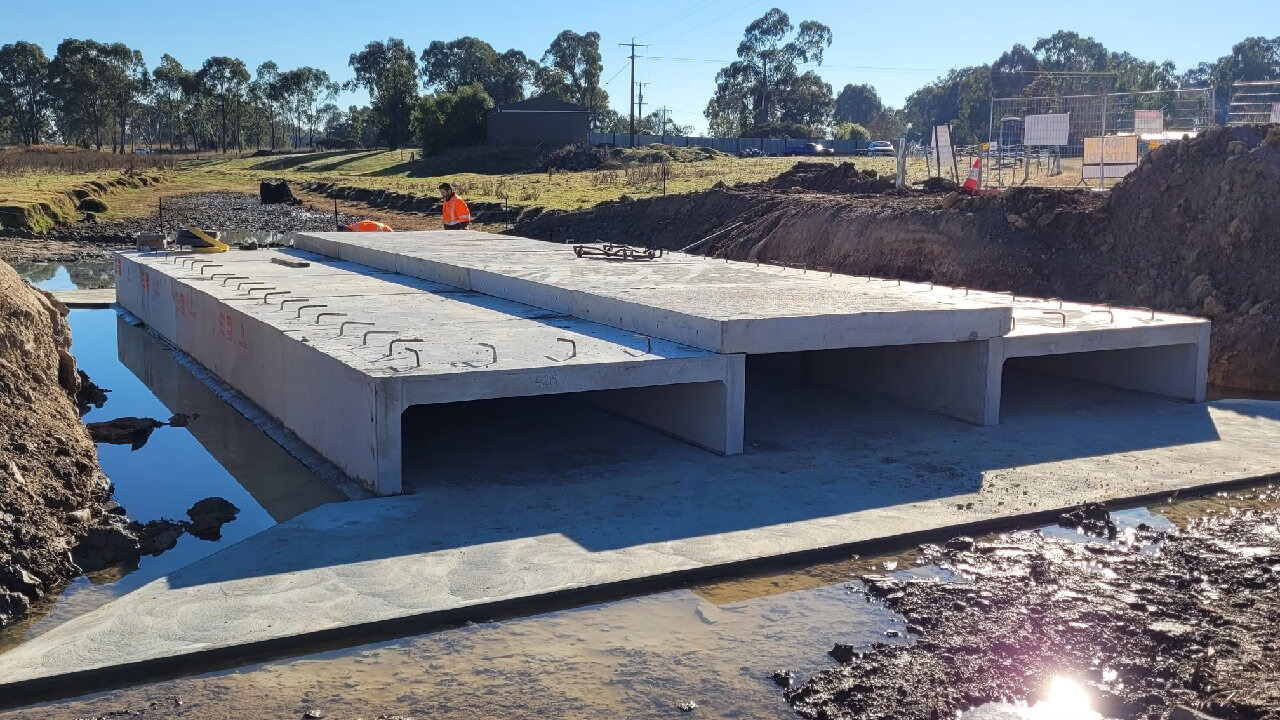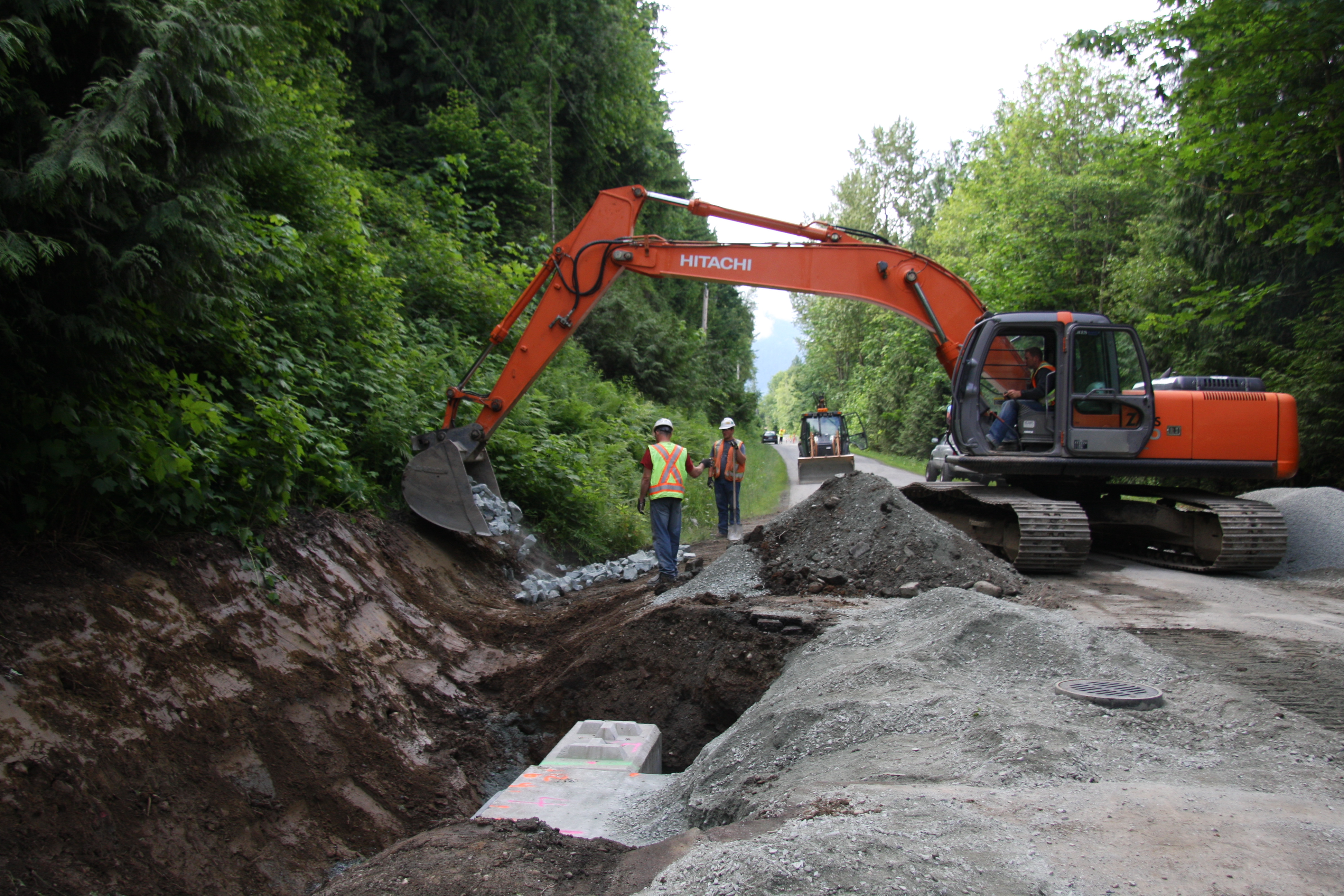Culvert Installment Made Easy: Step-by-Step Guide for Success
Setting up culverts might look like a straightforward task, however making certain a successful outcome requires cautious preparation and implementation. From picking the proper culvert size to incorporating correct water drainage measures, each step in the installment process plays an important function in the performance and durability of the culvert system. By adhering to a systematic strategy and taking notice of essential information, the installation can continue efficiently, decreasing prospective issues down the line. Keep tuned to uncover the essential actions and considerations that can make culvert setup a seamless and successful endeavor.
Choosing the Right Culvert Size
Selecting the suitable culvert size is critical for making certain effective water circulation and structural honesty in culvert setup projects - Pad Construction. The dimension of the culvert straight influences the flow capacity of water via the framework. A culvert that is also little can lead to flooding and overflow, while one that is also big might result in decreased water rate, potentially causing debris accumulation and obstructions
To identify the appropriate culvert size, variables such as the watershed area, height flow prices, and hydraulic efficiency requirement to be very carefully taken into consideration. Calculations based upon these parameters assist in selecting a dimension that can adequately handle the anticipated water volume while decreasing the threat of blockages and structural failure.
It is vital to seek advice from engineering standards and standards to make certain that the selected culvert dimension meets the job requirements and local guidelines (Pad Construction). By picking the best culvert size, project supervisors can optimize water flow, stop possible issues, and enhance the total efficiency and durability of the culvert installment
Preparing the Installment Website
Efficient culvert installation requires careful prep work of the installment website to guarantee ideal structural support and performance. Before beginning the setup process, it is important to clear the website of any type of particles, plants, or blockages that could impede the culvert's placement. Ensuring a level structure is essential for the correct placement and security of the culvert. This may include rating the site to create a smooth, also surface area that can effectively sustain the weight of the culvert and any type of awaited lots. Furthermore, proper compaction of the dirt below the culvert is required to stop working out or moving over time.
Additionally, it is essential to consider factors such as soil structure, groundwater degrees, and ecological impacts when preparing the setup site. Performing a comprehensive site evaluation can assist identify any type of possible obstacles or threats that may affect the culvert's efficiency. By putting in the time to prepare the installation site correctly, you can assist guarantee an effective culvert setup that fulfills architectural needs and makes sure long-lasting performance.
Putting the Culvert Appropriately

The quality at which the culvert is positioned is critical for keeping a correct slope for water circulation. In addition, the culvert needs to be oriented appropriately to make sure that the inlet and outlet are in the proper places. Pad Construction.
Backfilling and Compacting the Soil
Correct backfilling and compaction of the soil around the culvert is crucial to make sure stability and stop prospective issues in the future. When the culvert is correctly put, the following important action is to backfill the location around click this link it with read more ideal material.
After positioning the backfill product, it is vital to small it in layers of consistent thickness. Utilizing a compactor or a mechanical meddle, compact the dirt carefully to stay clear of damaging the culvert. Compaction assists in lowering the chances of settlement and guarantees uniform support around the culvert. It is vital to compact the soil equally on all sides of the culvert to keep its architectural integrity.
Correct backfilling and compaction not only supply stability to the culvert however likewise assist in stopping soil erosion and preserving the longevity of the culvert system.
Guaranteeing Proper Water Drainage Integration
Integrating efficient drain remedies plays an essential duty in the overall functionality and longevity of culvert setups. Correct drain assimilation is crucial for handling water flow, avoiding disintegration, and guaranteeing the architectural stability of the culvert system. To attain this, it is crucial to develop a comprehensive drain plan that thinks about factors such as the volume of water anticipated, the topography of click here for more the area, and the kind of soil present.

In addition, integrating attributes like disintegration control measures, such as riprap or greenery, can additionally improve the efficiency of the water drainage system. By carefully planning and executing these drain options, culvert setups can work efficiently and endure the test of time.
Conclusion
To conclude, proper culvert installation is essential for maintaining effective drain systems. By choosing the best culvert size, preparing the installation site, placing the culvert properly, backfilling and compacting the soil, and ensuring proper water drainage assimilation, success can be accomplished. Following these actions will certainly aid ensure the durability and efficiency of the culvert, ultimately contributing to the overall success of the drain system.